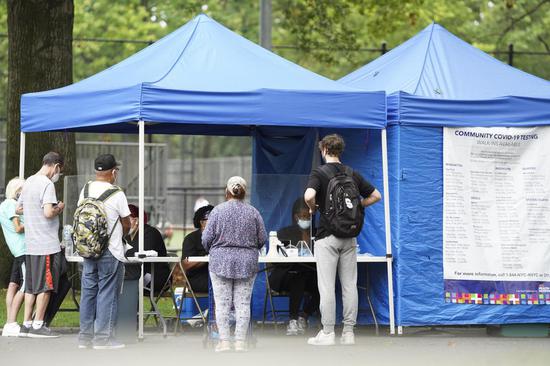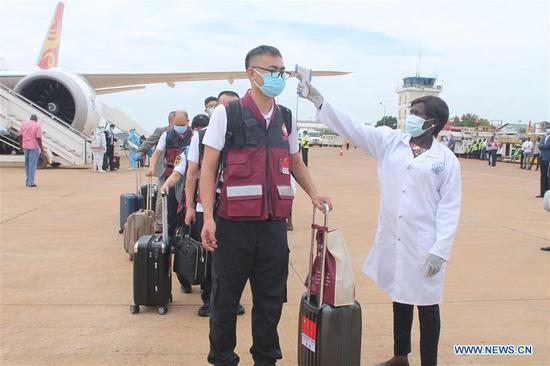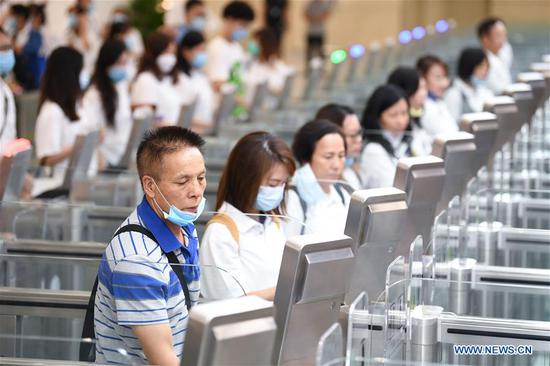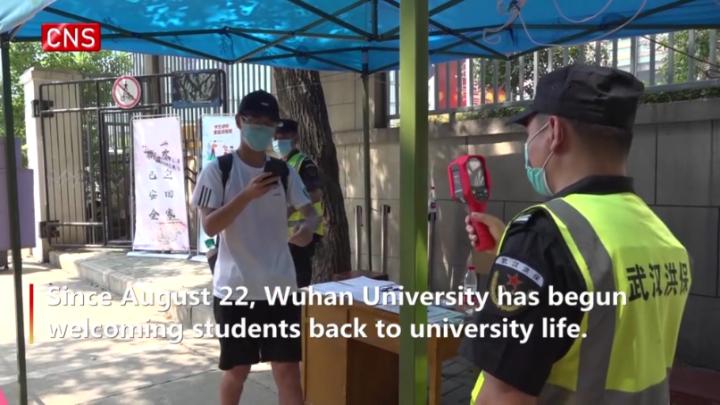
People wait to receive COVID-19 test at a temporary test site at Sunset Park of Brooklyn in New York, the United States, Aug. 13, 2020. (Xinhua/Wang Ying)
The U.S. Centers for Disease Control and Prevention (CDC) has changed its COVID-19 testing guidelines, no longer recommending testing for most people without symptoms, which has sparked controversy as experts warn it may hamper the timely identification of asymptomatic individuals with COVID-19.
The new testing guidelines, updated earlier this week, ask people to get tested if they have symptoms of COVID-19, or have had close contact (within 6 feet of an infected person for at least 15 minutes) with someone with confirmed COVID-19, or have been asked or referred to get testing by their healthcare provider, local or state health department.
"If you have been in close contact (within 6 feet) of a person with a COVID-19 infection for at least 15 minutes but do not have symptoms: You do not necessarily need a test unless you are a vulnerable individual or your health care provider or State or local public health officials recommend you take one," said the new guidelines.
That is a stark change from the previous CDC guidance, which emphasized the importance of testing people who were in close contact with infected people.
"Testing is recommended for all close contacts of persons with SARS-CoV-2 infection," said the previous guidance. "Because of the potential for asymptomatic and pre-symptomatic transmission, it is important that contacts of individuals with SARS-CoV-2 infection be quickly identified and tested."
The move drew criticism and confusion from public health experts, who said that to identify asymptomatic COVID-19 patients through testing is greatly important.
The change could undermine contact tracing, a core strategy for slowing the spread of the virus, they noted.
According to a CNN report, the new guidelines were the result of political pressure. "It's coming from the top down," a federal health official told CNN of the new directives.
The new CDC guidelines appeared to be the result of an idea raised to the task force by CDC Director Robert Redfield a month earlier, when a surge of coronavirus cases strained U.S. testing resources and some members were looking for new messaging on how to stem excess testing, said the CNN report.
"This Guidance has been updated to reflect current evidence and best public health practices, and to further emphasize using CDC-approved prevention strategies to protect yourself, your family, and the most vulnerable of all ages," said Assistant Secretary for Health at the U.S. Department of Health and Human Services (HHS) Brett Giroir.
"Many of us are confused by @CDCgov excluding people without symptoms from testing guidelines," tweeted Natalie Dean, an assistant professor of biostatistics at the University of Florida, citing an HHS spokesperson as saying the guidance was revised to reflect "current evidence" and the "best public health interventions."
"But what is the evidence?" she asked. Enditem


















































